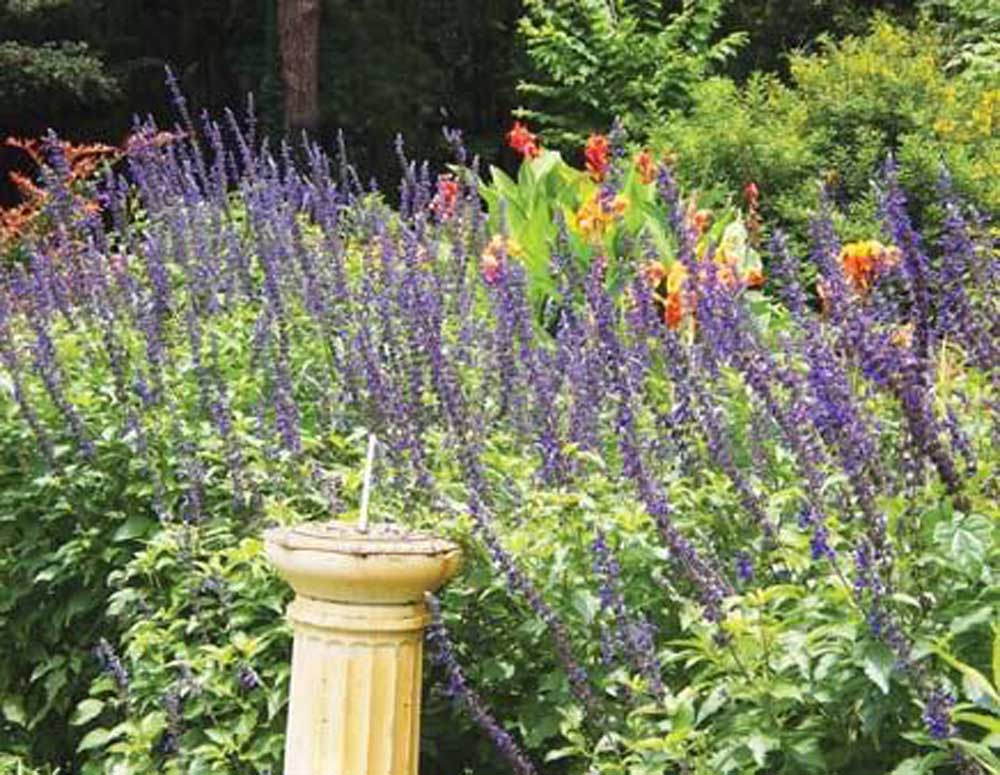In Texas, salvias bloom throughout the year
Published 2:45 am Thursday, May 24, 2018

- SALVIAS PROVIDE color and texture when little else is in bloom.
Salvias comprise one of the most varied groups of plants, being among the world’s largest genera. In Texas, their bloom period extends throughout the year, providing color and texture when little else is in bloom.
Following is a selection of salvias including reds, blues, and purples ranging in size from groundcover to large specimens. A few listed are annuals but most are cold-hardy perennials.
Trending
• Salvia farinacea or Mealy Cup Sage is a native of Texas and New Mexico. It likes full sun and dry, well-drained soil and is good on a hillside. It is hardy to around zero degrees. Most often the flowers are blue but there is a white variety and both grow to about 18 inches. This plant also does well in pots.
• Salvia microphylla or Hot Lips was introduced by Richard Turner, of California, and was brought from Mexico. The fast-growing clump — 6 feet wide by 30 inches tall — is adorned with eye-catching bicolor flowers with red tips and white lips. As nights warm, the new flowers are mostly red with the exception of a few white blooms. Then as fall approaches, the flowers again become bicolor red and white.
• Salvia Indigo Spires has intense blue-purple flowers on a 4-foot mounded shrub. Indigo Spires blooms from spring to first frost. It likes well-drained soil and full sun and is tender hardy. It should be pruned close to the ground and mulched well for the very cold season. It is easily propagated from cuttings, as are many types of salvia.
• Salvia coccinea or Scarlet Sage is sometimes called Texas Sage and is a Texas native. Attractive to bees, butterflies and birds, it serves well in the garden. Popular cultivars are Lady in Red, Coral Nymph and White Nymph. It self sows freely and grows well in dry shade. Regular dead head pruning keeps it blooming all summer and avoids a leggy look.
• Salvia elegans or Pineapple Sage likes the shady part of a sunny herb garden. It is called Pineapple Sage for a good reason, as the leaves have a pinapple aroma when rubbed and tossed in a summer salad. The plant grows 3 to 4 feet and has small firecracker red blossoms in late summer until first frost, when it needs to be cut back and mulched for cold weather. Butterflies and hummingbirds are attracted to the red blossoms.
• Salvia greggii or Autumn Sage is native to South, Central and West Texas and is quite drought tolerant. It normally has a fragrant leaf and red flowers but many color variations exist. If pruned in late winter and again in August, it will keep a nice 3-foot compact mounded shape. It blooms well into late fall and is hardy to zone 8.
Trending
• Salvia leucantha or Mexican Bush Sage has lovely purple flowers and blooms in the late summer. It is a 3-to 5-foot shrub that is heat-and somewhat drought-tolerant. It is a tender hardy perennial that needs to be pruned to the ground and mulched for coldest weather. The blossoms make good cut flowers and the plant is easily propagated from cuttings.






